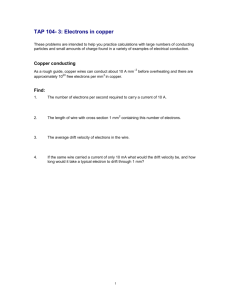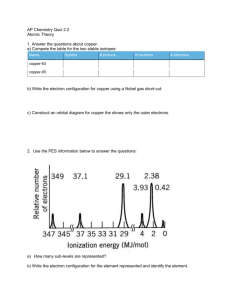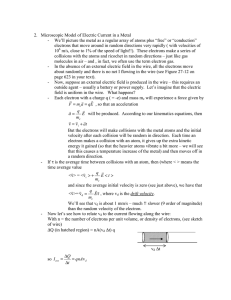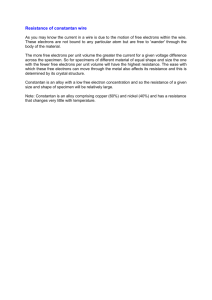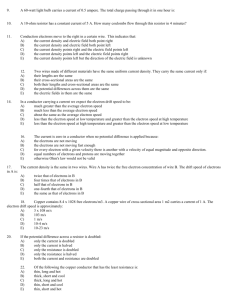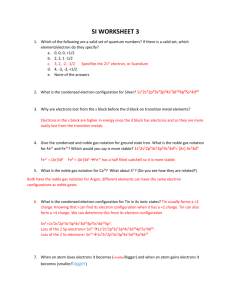Electron Speed
advertisement
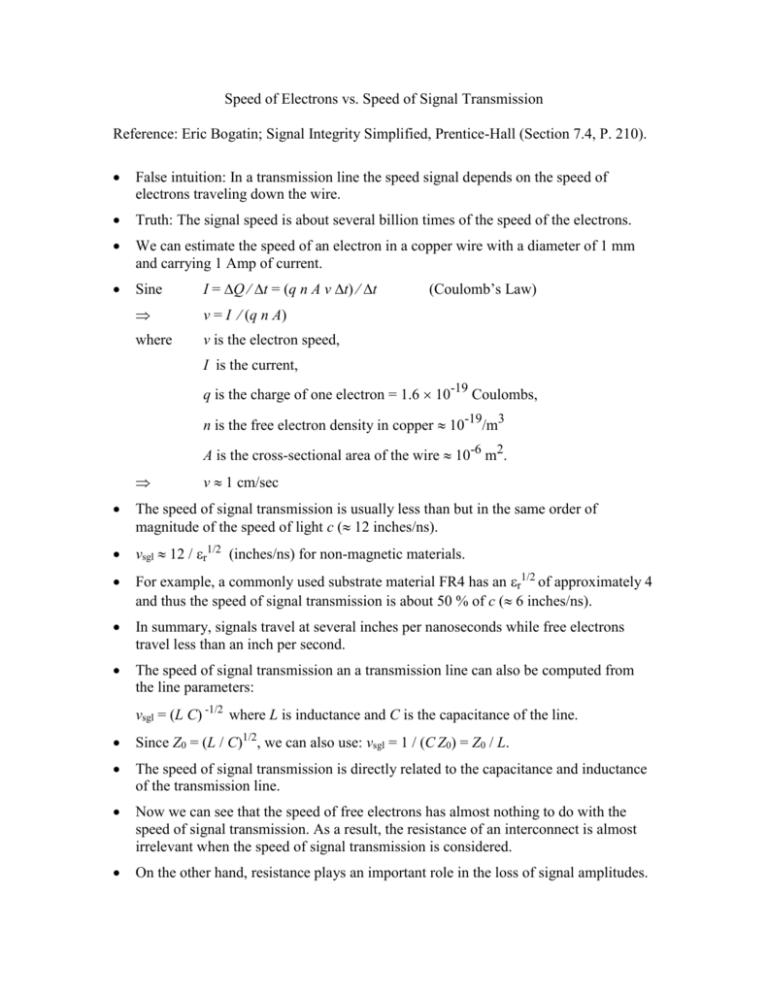
Speed of Electrons vs. Speed of Signal Transmission Reference: Eric Bogatin; Signal Integrity Simplified, Prentice-Hall (Section 7.4, P. 210). False intuition: In a transmission line the speed signal depends on the speed of electrons traveling down the wire. Truth: The signal speed is about several billion times of the speed of the electrons. We can estimate the speed of an electron in a copper wire with a diameter of 1 mm and carrying 1 Amp of current. Sine I = Q t = (q n A v t) t v = I (q n A) where v is the electron speed, (Coulomb’s Law) I is the current, q is the charge of one electron = 1.6 10-19 Coulombs, n is the free electron density in copper 10-19/m3 A is the cross-sectional area of the wire 10-6 m2. v 1 cm/sec The speed of signal transmission is usually less than but in the same order of magnitude of the speed of light c ( 12 inches/ns). vsgl 12 / r1/2 (inches/ns) for non-magnetic materials. For example, a commonly used substrate material FR4 has an r1/2 of approximately 4 and thus the speed of signal transmission is about 50 % of c ( 6 inches/ns). In summary, signals travel at several inches per nanoseconds while free electrons travel less than an inch per second. The speed of signal transmission an a transmission line can also be computed from the line parameters: vsgl = (L C) -1/2 where L is inductance and C is the capacitance of the line. Since Z0 = (L / C)1/2, we can also use: vsgl = 1 / (C Z0) = Z0 / L. The speed of signal transmission is directly related to the capacitance and inductance of the transmission line. Now we can see that the speed of free electrons has almost nothing to do with the speed of signal transmission. As a result, the resistance of an interconnect is almost irrelevant when the speed of signal transmission is considered. On the other hand, resistance plays an important role in the loss of signal amplitudes.
